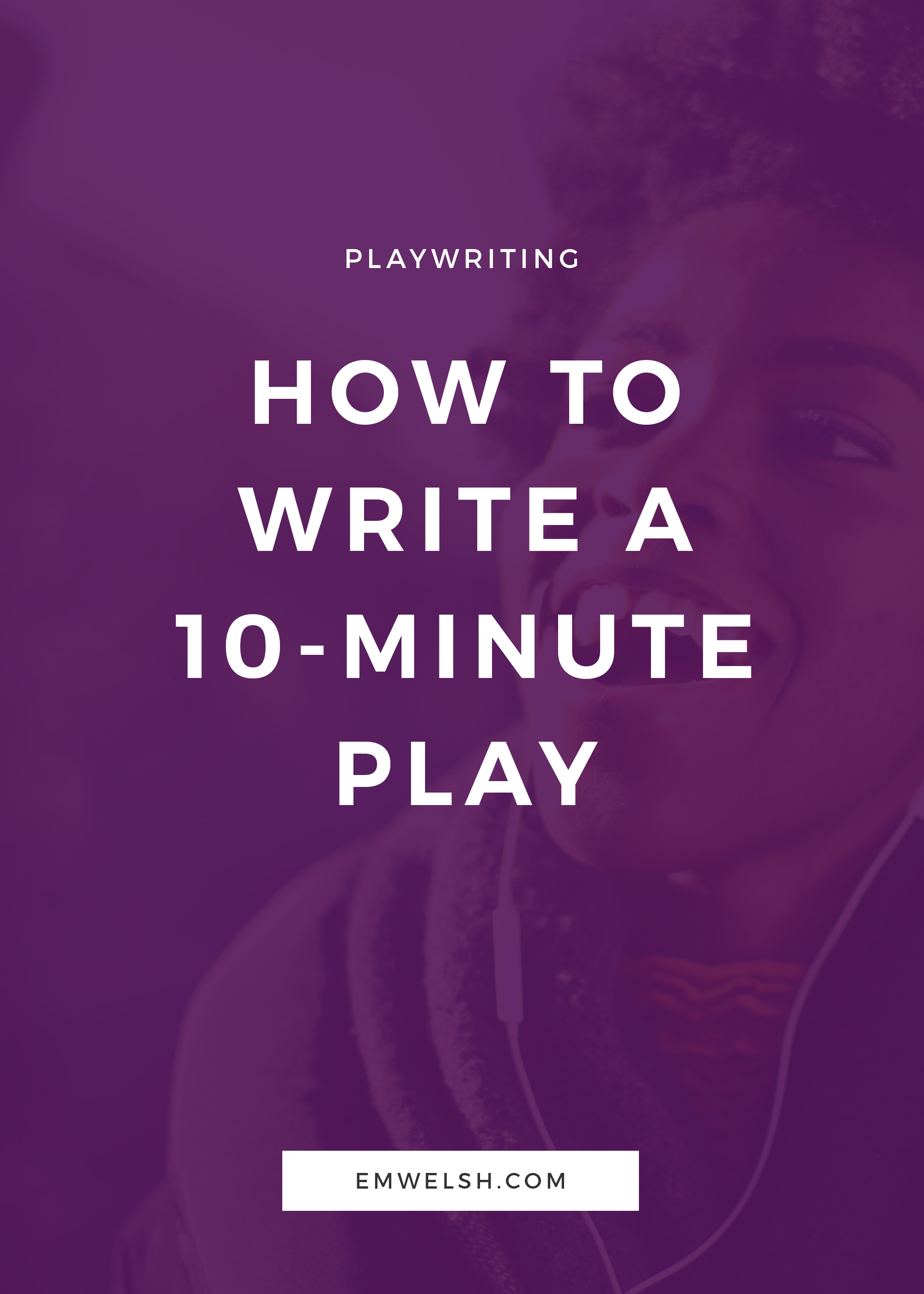Six Plays Every Writer Must Read
/Often as novelists, it’s easy to get caught up in all the books we need to read. However, if you’ve ever felt like you were in a writing funk, then it might be a good idea to try mixing things up and reading a play–or seeing one if your local theater is showing any.
While of course seeing a play is the ideal way to experience the story, often that is just not possible, so many writers tend to forget about reading plays as an option. Though the experience is by no means the same, there are many benefits to still reading a play.
Plays are wonderful breaks from novels for a few reasons. One of these reasons is that it boosts your readers’ confidence, meaning if you are struggling to read a lot lately, then a short play would give you a quick story to reinvigorate your reading life. On that note, plays are usually short reads, so it’s easy to add one to your reading list without completing side-tracking said list.
Of course, beyond the speed at which you can read a play, there’s also an immense reliance on dialogue in theater – it’s how the story is told – which means that reading plays can really help you with your dialogue, and therefore character.
To make picking out your next play even easier, I have curated six plays every writer must read. Each play commands a unique voice, despite the fact that playwrights must write in such a way that allows their work to be put on by many different people.
However, because there are only six listed, many greats have been left out and this list is by no means comprehensive. Masters like Arthur Miller and Eugene O’Neill have been left out not because I do not think their work is wonderful, but because many readers know of these two playwrights and I wanted to make the list be split evenly between male and female playwrights.
So, with that, here are six plays every writer should read:
One Flea Spare by Naomi Wallace
What It’s About:
In many ways, it’s easier to just read or see One Flea Spare than to describe it, as the actual narrative is magical and eerie and difficult to put into words. Set in a plague-infested London, when a rich family prepares to leave their home they are stopped by a young girl and a sailor and are suddenly quarantined in their home with the two strangers for twenty-eight days. What follows is a strange exploration of human relationships and how being in the same space with people for so long can affect those relationships.
Why You Should Read or See It:
When writing dialogue – be it for a novel or for a play – it’s easy to get caught up in the reality of your story and making the dialogue seem real. But in One Flea Spare, the dialogue isn’t real, it’s poetic, and yet it still manages to move the reader and connect to them with conversation alone. Rooted in a relatively realistic setting, One Flea Spare has a magical realist approach to storytelling that is sure to give inspiration to any literary fiction writer looking for a touch of the unknown in their writing.
Our Town by Thornton Wilder
What It’s About:
Our Town tells the story of a fictional small-town in the early 1900’s. It explores the daily lives of the small-town citizens through a narrator who speaks directly to the audience. Divided up into three acts, the play goes from daily life, to love and marriage, to death, all in the span of one show. It explores the many different lives of the people within the town, watching as they go from their daily lives to death, and in many ways exists to emphasize how people should appreciate the little things in life. Though the premise alone may not seem enticing, it’s how it’s told that makes it so superb.
Why You Should Read or See It:
Part of what makes Our Town so wonderful and poignant is how meta it is. Narrated by the Stage Manager and set in the actual theater, Wilder’s play does a great job showcasing what makes seeing a play so interesting. The Stage Manager speaks to the audience, breaking the fourth wall and telling the entire story like an anecdote to an old friend, making it a great piece to study for those writing about families or the passage of time. Additionally, because Thornton Wilder was also a beloved novelist, reading his theatrical work provides a way for novelists to learn how to use different strengths in different mediums.
‘Night Mother by Marsha Norman
What It’s About:
The subject matter of ‘Night Mother is undoubtedly dark, telling a tale of a mother trying to convince her daughter not to commit suicide. Taking place in one room, the entire conversation of Jessie, the daughter, explaining to her mother, Thelma, about her planned suicide is haunting in its longevity. Though their conversation is calm and deeply personal, the fact that the entire play takes place in one room and exists in one conversation makes for a chilling story.
Why You Should Read or See It:
Though the content is undoubtedly heavy and disturbing, ‘Night Mother exposes the power of suspense that one can implement with just one sentence uttered at the beginning of the play when Jessie tells her mother of her plans to kill herself that night.
The fact that the entire play is one conversation, yet can still hold readers’ and audience members’ attention is a testament to powerful character creation and dialogue, something every playwright must work hard to master.
Yet coupled with all of this, ‘Night Mother manages to explore themes beyond suicide in a sensitive matter, exploring a mother-daughter relationship in a way plays of the time would shy away from.
The Glass Menagerie by Tennessee Williams
What It’s About:
Told as a memory, in The Glass Menagerie, Tom reflects on an instance with his sister, Laura, and his mother, Amanda. Laura has a crippling shyness that has caused her to drop out of school and often confine herself to her room. Her mother, obsessed with marrying Laura off, insists Tom invite a coworker over to dinner to help find a match for Laura. Though Tom claims his narration to be unreliable, the story serves as a strong study of the effects of forcing someone to be who they are not, especially those who are women.
Why You Should Read or See It:
If anyone knows how to name a story, it’s Tennessee Williams. But beyond that, Williams crafts poignant, heartbreaking tales that feel all too real, so that if you ever get the chance to see his stories performed live, you absolutely must.
Known for the works like A Streetcar Named Desire and Cat on a Hot Tin Roof, The Glass Menagerie offers an early glimpse of Williams' complex understanding of women and the pressures in society they faced. It serves as a great base for appreciating his work as a storyteller but also can demonstrate to writers how to write realistic and believable dialogue that is still poetic. After all, almost every title for his plays comes from a line of dialogue in his story.
Who's Afraid of Virginia Woolf? By Edward Albee
What It’s About:
When Martha and George, a middle-aged married couple, come home from a college party with a younger, newly-wed couple, Nick and Honey, the two couples share an unforeseen drunken night together. Immediately it is no secret that Martha and George detest one another, and the relationship begins to weigh on the delight of Nick and Honey, who are still young and have yet to see the woes of marriage. Comedic and yet bitterly truthful, Who’s Afraid of Virginia Woolf? tells the tale of marriage, comparing the newly wed bliss with the harsh reality that comes with years spent together.
Why You Should Read or See It:
Who’s Afraid of Virginia Woolf? is undoubtedly one of the best studies of marriage known to date. Though the themes are dark and sinister, there still remains a positive undertone to the entire narrative, so that if you are hoping to write a story about a realistic marriage, there is no better starting point than Who’s Afraid of Virginia Woolf?
Though Martha and George may hate each other in many ways, it’s also clear there’s no one else they’d rather be with. The story shows a closeness between two people that many stories about relationships gloss over – the closeness of knowing someone better than anyone else, and the consequences that follow.
Luckily, this play was adapted into a fantastic movie, meaning you can see it performed with some amazing actors no matter where you are. While the experience will undoubtedly be different than if you were to see it as a play, it still is a great chance to see Albee’s stunning understanding of relationships between straight couples.
A Raisin in the Sun by Lorraine Hansberry
What It’s About:
The first play written by an African-American woman to go to Broadway, A Raisin in the Sun tells a story of an African-American family as they try to rebuild their lives after the death of their father. As the family waits for a life insurance check, tensions rise and debates follow as each person in the family has their own idea as to what would be the best way to spend said money. The play serves as a deep discussion of the many perspectives and viewpoints amongst African-Americans at the time, providing a much-needed representation of their community and perspective.
Why You Should Read or See It:
When A Raisin in the Sun came out, it was considered “controversial” because there was only one character who wasn’t a minority in it. Though now such a play is more commonplace – though not as much as it should be – it is important to refer back to the works that started to make an impact on our culture, especially given the play’s success.
However, beyond its cultural impact, A Raisin in the Sun tells a universal story of conflicting ideals. It explores the woes of growing up in a poverty-stricken home and the hardships anyone in that situation may face, including the constant battle of whether hoping or wishing for something is helpful at all. For that reason, it’s a great piece for storytellers to read or see not only because of the different perspective but because of the wonderful exploration of different ideas and how they clash.








